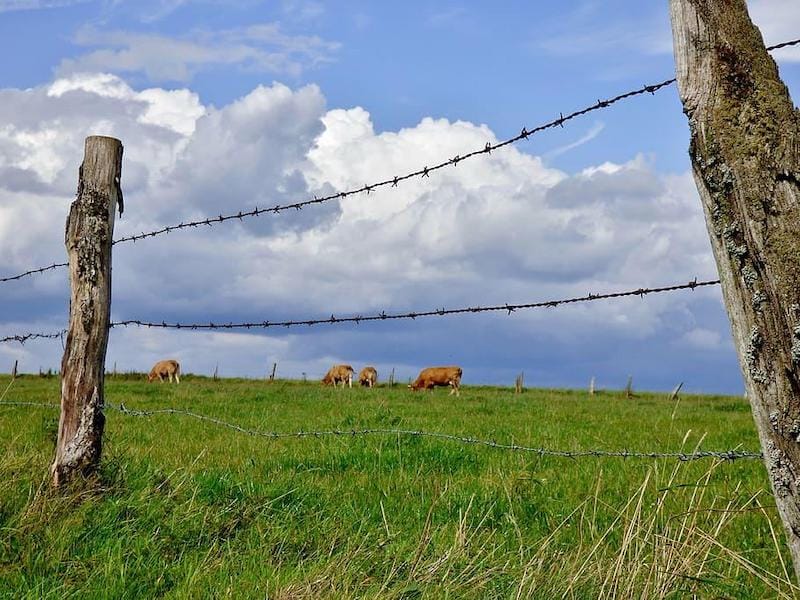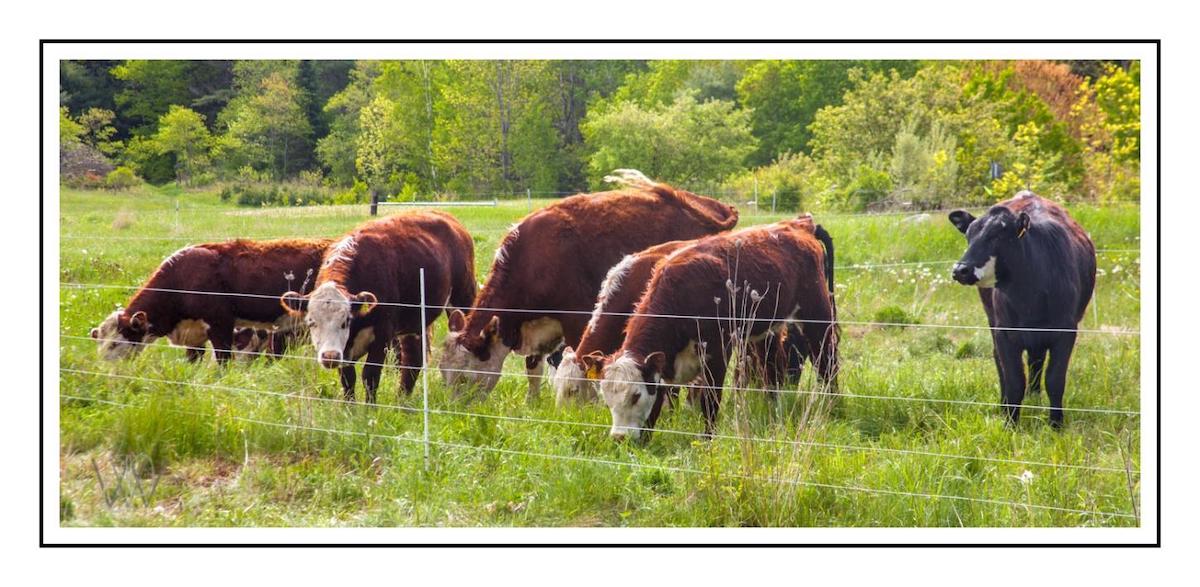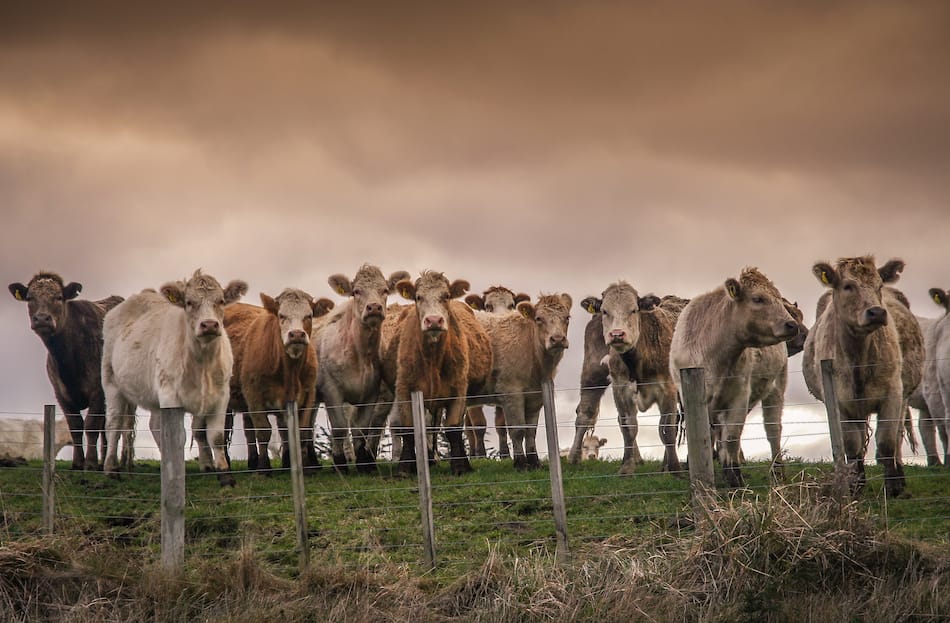I’m sure you’ve heard about the folktale about the polar bear in the cage but let’s have a quick recap anyway!
There once was a wild polar bear that was captured and put inside a cage. Years passed and the polar bear grew very old and its keepers decided to set him free.
They removed the cage but guess what?
The polar bear continued to pace the boundaries of the cage and didn’t put one foot outside!
It’s a neat story and you must be wondering what this has to do with you, as a farmer.
Well, you’re about to find out!
Electric fences are exactly like the polar bear’s cage, once it has been removed. Boom!
Electric fences are a psychological barrier that cows know not to cross – via psychological conditioning – and not just because it’s something tangible and physical, like a cage.
Psychological barriers are trained responses to a particular occurrence. If you train your cows to respect the fence, they know not to cross it while grazing. On the other hand, if your cows are untrained, they’re probably going to storm past the electric wires without giving two hoots and probably secretly laughing at us while doing so!
Electric fences are just thin pieces of wire that border a fence. Your cattle can easily pass through it, get mild electrocution, not get fazed and continue to graze.
But to your trained cows, electric fences are more of a barrier that exists in their minds, than in real-time. Cattle quickly learn to fear and respect it, which makes rotational grazing a whole lot easier and much more successful.

How to build fences using cow psychology
If you construct your fences taking into account how cows view the environment around them, we assure you that your fences are going be great at controlling your cows' grazing patterns. Here are a few points to remember:
- You know that cows are clannish and are herd animals. If you have a corner in an alley that turns more than 90 degrees, your cattle will stall. This is because those right at the end will reverse the way they are going to follow their leaders even before they have cleared the corner!
- Always place your gate in the corner. If you have your gate positioned along a fence-line, some cows will end up missing the gate as they follow their leaders. Also, your gates should be placed in areas where it’s simple to see if it’s opened or closed. A cow with a monocular vision will find it difficult to spot a single wire fence. Sometimes, if you have an open gate against another fence, it gets hard for the cows to judge if the gate is open or shut.
- Your alleys need to be wide enough so that your herd can all team up together. So, your alleys need to be designed keeping in mind the size of your herd in each of your pasture rotations.
If the alleys are narrow and your cows find that they are too close for comfort to the electric wires, they will break into a sweat. And when they panic, they might even burst through the electric fence or jump over it because they’re scared.
Best management practices according to the type of animal:
Sheep & goats:
For sheep and goats, a good perimeter fence is recommended, especially so they don’t end up becoming a snack for hungry predators! Your fence also needs to have a good electric charge running through because sheep with heavy wool are usually insulated from shocks.
Since both sheep and goats are short, wires are usually close to the ground. So, extra care must be taken to clear off vegetation so that grounding is reduced and there is a good amount of electric charge in the system.
One of the best management practices that have proved effective for sheep is specialized electrified netting materials.
Cattle:
Cattle adapts most easily to electric fencing. They don’t need as many wires as sheep and goats, or even those that have to be lower to the ground. The number of wires best for the fence depends on the age of the animal.
Sometimes, if your animals are well-trained, even a single wire is enough to get the job done! Polywire is usually the best choice with cattle given that it’s super easy to install and remove and works well for rotational grazing.

Horses:
Since horses like to gallop and are so much faster than cows, goats and sheep, they need a very visible fence, unlike the other animals.
Since polywire is not that easily visible, the electrified tape is a good choice for horses. Horses are also much more vulnerable to electric shocks and they can easily get caught in the wire and hurt themselves. For horses, it’s always better to consult an expert before you fix your fences.
So now that we’ve got an overall idea of what kind of fence works best for different types of animals, let’s talk fences!
Electric fencing principles
The electrical flow needs a completed circuit. The current travels from its source through the complete system and then return to the source. When electricity flows, the circuit is called ‘closed’. When no electricity flows, the circuit is called as ‘open’.
Electric fences are open till an animal touches the charged wire causing the electricity to flow back to its source.
This causes two animal reactions. A small current results in tingling or burning sensation while a large electric current causes involuntary muscle reactions. Like we mentioned before, an electric fence has to have a minimum amount of voltage to get past the hide and hair of the animals.
An important thing to remember is to never, ever use barbed wire in electric fences. Animals and even humans could get caught in the wire and if they’re unable to remove themselves in time, it could cause major damages and death.
Train cattle to electric fences
If you suddenly introduce a cow to a fence, it’s not really going to know that it has to fear the wire. The cows will probably end up trampling and flattening your fences.
So first things first – allow them to experience a zap of electricity! A cow born on the farm will simply learn not to go to the fences because they’ve seen the adults keep away and they will too.
But, when you’re trying to teach untrained cattle, first you need to artificially form a situation that will get them near the electric fences when they are still inside a pen bounded by a barrier so that they don’t escape during the training session.
To train your cattle, simply build a small and secure pen with a single wire placed through the middle. Leave a wide gap on one end of the training fence so that your cows can easily move between two sides of the fence.
On one side, put some feed and on the other side, place drinking water so that your cows have to make the trip around the cross-fence. Since the wire is right between the food and the water, they will end up either brushing up against the wire or even try taking a shortcut to avoid going all the way around to get to the water.
You can even put some peanut butter on the wire to arouse their curiosity!
By the end of the exercise, all your cows would have received a slight zap and by now know enough to avoid the electric fences when they’re out on pasture.
Now I’ll tell you a little secret. If your cows are well-trained, you can even trick them by placing dummy wires that don’t have electricity surging through them! Cows don’t end up testing these dummy wires for months together simply because of the psychological barrier you’ve placed in their minds.
Kind of like the polar bear situation, isn’t it?

Fencing is a key aspect of rotational grazing which in turn offers a multitude of benefits for your farm. If done right, it could prove to be very fruitful and result in higher productivity and profits for your pastures!
If you’re looking at taking the guesswork out of your grazing practices, head to Pasture.io and we’ll give you all the help you need to measure your pastures with zero labour.
Until we meet again, Happy Farming!
- The Dedicated Team of Pasture.io, 2020-10-15